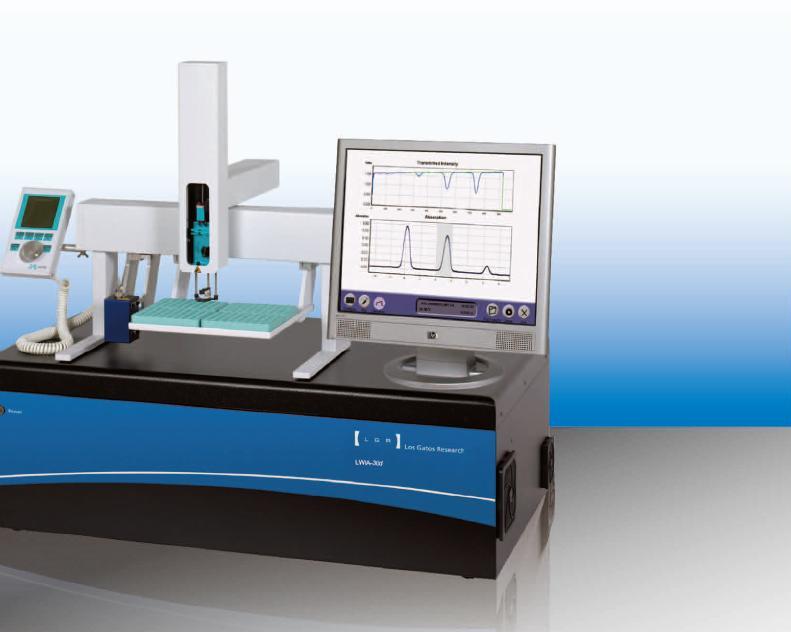水土平衡:半干旱环境中原位不饱和地区水稳定同位素的测量
时间:2016-04-06 阅读:2435

摘要:
在纳米比亚Cuvelai–Etosha半干盆地采用液体水同位素分析仪(LGR可调节离轴积分腔输出光谱技术)及商用土壤气体探头测量土壤水分的稳定同位素(氘,2H, oxygen-18, 18O)。结果证实了原位测量土气水分稳定同位素的可行性。在研究区域获得了合理而准确的高时空分辨率数据。测量结果与低温真空萃取及后腔衰荡激光光谱学同位素分析的实验室数据一致。
在2014年6月-10月连续两次野外活动经过140次测量,原位同位素数据的漂移和跨度修正后的精度分别为:δ2H:1.8,δ18O:0.48 ‰ 。使用质量检查标准得到平均测量准确结果分别为δ2H :5 ,δ18O :0.3 ‰。定量同位素剖面深度来计算土壤水分平衡。水蒸发量占总地表水蒸发量72-92%。降雨后蒸发量立即降低至35-50%范围。激光光谱仪的原位系统存在与环境条件相关的潜在局限性,可通过使用温度调节室zui小化。而且使用烘箱预先干燥的土壤原料,土壤的理化性质(即粘土矿物)可能会使系统适用性受到限制。通过改良校准程序以及进一步研究影响土壤水分同位素比值的数据,可减少原位系统的不确定性,尤其在低含水量条件下。此外,无法从数据推断出土壤呼吸二氧化碳对根区同位素值的影响。
引用文献:
Gaj, M., Beyer, M., Koeniger, P., Wanke, H., Hamutoko, J., and Himmelsbach, T.: In situ unsaturated zone water stable isotope (2H and 18O) measurements in semi-arid environments: a soil water balance, Hydrol. Earth Syst. Sci., 20, 715-731, doi:10.5194/hess-20-715-2016, 2016.
【英文】
In situ unsaturated zone water stable isotope (2H and 18O) measurements in semi-arid environments: a soil water balance
Marcel Gaj1,2, Matthias Beyer1, Paul Koeniger1, Heike Wanke3, Josefina Hamutoko3, and Thomas Himmelsbach1 1Federal Institue for Geosciences and Natural Resources (BGR), Stilleweg 2, Hanover, Germany
2Chair of Hydrology, Faculty of Environment and Natural Resources, University of Freiburg, Fahnenbergplatz, 79098 Freiburg, Germany
3Department of Geology, University of Namibia (UNAM), Windhoek, Namibia
Received: 01 Apr 2015 – Published in Hydrol. Earth Syst. Sci. Discuss.: 23 Jun 2015
Revised: 22 Dec 2015 – Accepted: 25 Jan 2016 – Published: 17 Feb 2016
Abstract.
Stable isotopes (deuterium, 2H, and oxygen-18, 18O) of soil water were measured in the field using a liquid water isotope analyzer (tunable off-axis integrated cavity output spectroscope, OA-ICOS, LGR) and commercially available soil gas probes (BGL-30, UMS, Munich) in the semi-arid Cuvelai–Etosha Basin (CEB), Namibia. Results support the applicability of an in situ measurement system for the determination of stable isotopes in soil pore water. High spatial and temporal resolution was achieved in the study area with reasonable accuracy and measurements were in agreement with laboratory-based cryogenic vacuum extraction and subsequent cavity ring-down laser spectroscopic isotope analysis (CRDS, L2120-i, Picarro Inc.). After drift and span correction of the in situ isotope data, precision for over 140 measurements taken during two consecutive field campaigns (June and November 2014) was 1.8 and 0.48 ‰ for δ2H and δ18O, respectively. Mean measurement trueness is determined using quality check standards and was 5 and 0.3 ‰ for δ2H and δ18O, respectively. The isotope depth profiles are used quantitatively to calculate a soil water balance. The contribution of transpiration to total evapotranspiration ranged between 72 and 92 %. Shortly after a rain event, the contribution of transpiration was much lower, at 35 to 50 %. Potential limitations of such an in situ system are related to environmental conditions which could be minimized by using a temperature-controlled chamber for the laser spectrometer. Further, the applicability of the system using previously oven-dried soil material might be limited by physicochemical soil properties (i.e., clay minerals). Uncertainty in the in situ system is suggested to be reduced by improving the calibration procedure and further studying fractionation effects influencing the isotope ratios in the soil water, especially at low water contents. Furthermore, the influence of soil-respired CO2 on isotope values within the root zone could not be deduced from the data.
Citation: Gaj, M., Beyer, M., Koeniger, P., Wanke, H., Hamutoko, J., and Himmelsbach, T.: In situ unsaturated zone water stable isotope (2H and 18O) measurements in semi-arid environments: a soil water balance, Hydrol. Earth Syst. Sci., 20, 715-731, doi:10.5194/hess-20-715-2016, 2016.
